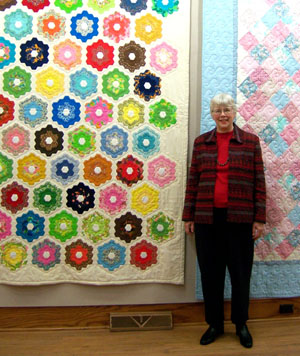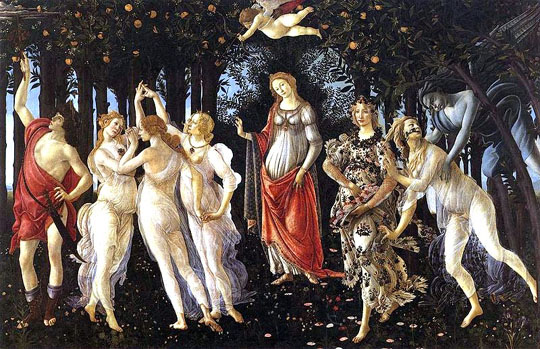What’s up at Wassenberg 1/26
Quilts, rugs focus of current exhibit
By Seth Baker
“The Art of Fiber,” on display through February 25 at the Wassenberg Art Center, Van Wert, features quilts, hooked rugs, and needle punched rugs, as well as some felted items. Exhibit hours are 1-5 p.m. Tuesday through Sunday (closed Mondays) and admission is free. The show is sponsored by 1st Federal Savings & Loan and Stephanie Dawn. Today’s column will spotlight the quilt display hanging in the art center’s Main Gallery.
The quilts on display in The Art of Fiber are from the collection of Barbara Pemberton. Most of the quilts in the exhibit were designed by Barbara using traditional patterns.

Barbara grew up in St. Louis, Missouri. She attended teachers’ college and graduate school in Chicago and moved to Van Wert in 1967 after she married her husband Dale. She served as an elementary school teacher, a learning disabilities teacher, a gifted education teacher, and was the K-12 Curriculum Coordinator for the Paulding County Schools. She also was a writing instructor at Indiana-Purdue University in Fort Wayne, Indiana. Between teaching, working, taking graduate classes and raising two children, Barbara designed and sewed quilts using the sewing machine she received from her husband as an engagement present. She still uses the same Singer straight-stitch sewing machine.
Pemberton learned the technique of patchwork and quilting from books and magazines. Her first quilt was ‘Barbara’s Flower Garden.’ It was pieced using the English paper-piecing method — using small, thin cardboard pieces, pinning the fabric around them, and hand-sewing the pieces together. The quilt took 20 years to finish by hand – as she focused on learning new techniques for quilts, wall hangings, pillow tops, and other fabric art. During this process, Barbara relied heavily on the sewing machine — which is much faster than hand-quilting.
Several quilts were quilted by Susan Darrah. Iona and Hubert Keuneke also quilted several of the quilts from their commercial quilting business located in Ohio City.
The Wassenberg Art Center is located at 643 S. Washington Street in Van Wert. Contact us by calling 419.238.6837, or by e-mail to wassenberg@embarqmail.com.
Looking at “Primavera” by Botticelli

By Kay Sluterbeck
In the Middle Ages, there were no mandatory birth certificates, and many records have crumbled to dust. However, it is believed that in 1445, in a working-class district of Florence, a boy was born to the family of the tanner Mariano di Vanni Filipepi. The boy’s birth date was calculated from a note in the Florence Registry filed by the youngster’s father, who complains that his 13-year-old son, Sandro, is “unhealthy” and “reading.”
We can see from this that the boy, who became the great painter Sandro Botticelli (1445-1510), had already formed his personality at this young age. He was rather frail, possibly melancholy, and loved independent intellectual pursuits — a passion obviously not shared by his father.
“Botticelli” means “little barrel”. Sandro’s husky, barrel-shaped brother was given this playful nickname by co-workers. Although Sandro was slender and not at all barrel-shaped, the nickname fell to him as well — and he became known as Sandro Botticelli. It was unusual for him to sign a painting, but when he did, he used this name.
“Primavera,” also known as “Allegory of Spring” is a tempera painting on panel completed by Botticelli around 1482. Although its history is not completely known, it may have been commissioned by one of the Medici family. It has been called one of the best-known paintings in Western art.
There are many interpretations of the painting’s meaning. The scene is a beautiful garden with fruit hanging overhead. Gathered there are six female figures, one male, and a blindfolded putto (a little naked boy with wings, often seen in Renaissance art). According to Botticelli himself, the woman in the flowered dress on the right side of the picture is Primavera (the personification of Spring). Her companion is Flora, who is being seized by Zephyrus, the sharp wind of March. Flowers spring from Flora’s mouth at the touch of the wind god.
In the center of the picture, Venus, the goddess of love, presides over the garden, accompanied by the Three Graces at the left side of the picture. The Graces bear jewels in the colors of the Medici family, and they are targeted by the putto, who represents Cupid.
At the far left side of the painting is Mercury, who holds up his caduceus (the symbolic herald’s staff, usually shown with intertwined snakes and wings at the top — you may have seen it as the symbol of physicians). The caduceus is keeping the garden safe from threatening storm clouds.
The names of the models are not known, but It has been speculated that the model for Venus was Simonetta Vespucci, possible mistress of Giuliano de Medici, who is said to have been the model for Mercury.
Another interpretation of the painting says that it may be an illustration of spiritual Neoplatonic love, represented by the Three Graces, as opposed to the earthy carnal love represented by Zephyrus. Notice that the central Grace has turned her back to the lustful Zephyrus and Flora, and she seems unconcerned by the threat of Cupid’s arrows. Instead, she gazes at Mercury, who is himself gazing beyond the canvas. Some experts think he was gazing at another painting. There may have once been a companion piece, “Primavera: Pallas and the Centaur,” in which love oriented toward knowledge triumphs over lust.
The painting may have been inspired by a poem, “De rerum natura,” by Lucretius. The poem includes the lines, “Spring-time and Venus come, and Venus’s boy, / The winged harbinger, steps on before, / And hard on Zephyr’s foot-prints Mother Flora, / Sprinkling the ways before them, filleth all / With colors and with odors excellent.”
Whatever its inspiration, the painting has captured the imagination of the world. It now hangs in the Uffizi Gallery in Florence. It was restored in 1982, although it has darkened considerably over the centuries. It must have once been as bright and shining as springtime itself, and it still has the power to stir many viewers to a feeling of joyful anticipation.
POSTED: 01/26/11 at 1:42 pm. FILED UNDER: What's Up at Wassenberg?







